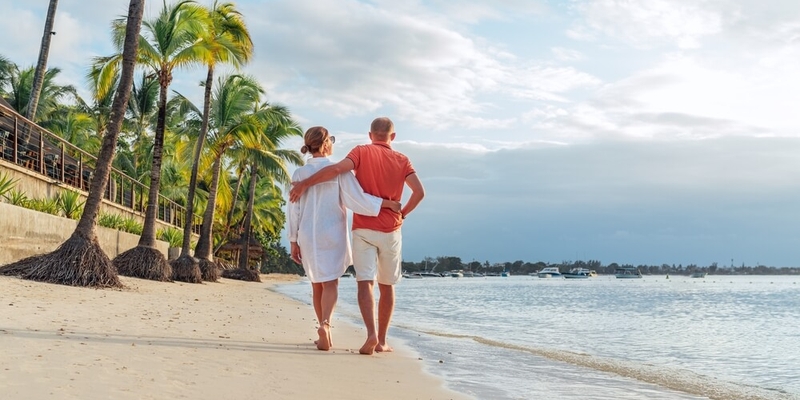
If you are not redirected within 30 seconds, please click here to continue.
Samedi: 10h – 16h HAE

If you are not redirected within 30 seconds, please click here to continue.
If you are not redirected within 30 seconds, please click here to continue.
Travel Insurance and Destination Trends Among Canadian Snowbirds

Canadian snowbirds are ready to flock south to sunnier climates as the country warms up to travel.
On Monday, November 8, the United States welcomed Canadians across its land border for the first time since March 2020.
In anticipation of crowds, border towns saw eager travellers arriving a few days early to beat the lines at border crossings. However, some snowbirds, many of whom usually depart for their vacation homes in October, may have felt that they were already late.
In fact, some snowbirds have more catching up to do than others. The Canadian Snowbird Association (CSA) estimates that about 70% of Canada’s snowbirds stayed home last winter — coincidentally, the same number of snowbirds that typically drive to the United States annually.
However, as the country reopens its borders, the CSA predicts about 90% of snowbirds will travel south this year — that’s more than 900,000 of them.
Top 10 countries snowbirds typically travel to
Many snowbirds head to warmer destinations to avoid the winter months, but where exactly are they going?
Because global travel slowed significantly last year, we felt that 2020 data wouldn’t provide a clear snapshot of snowbird destination and travel insurance trends. So, we looked at pre-pandemic Rates.ca data (spanning January 2017 to December 2019) to get a sense of where snowbirds typically chose to travel, and what type of insurance coverage they tended to opt for.
The data is based on travellers aged 55 and older who received a travel quote with the intent to purchase a policy from our site.
Historically, these are the top 10 destinations Canadian snowbirds favour, according to our data:
- United States
- Mexico
- Cuba
- United Kingdom
- Dominican Republic
- Canada
- Italy
- France
- Spain
- Portugal
The importance of travel insurance
No matter the destination, travellers should still do their due diligence, heed travel advice from the Government of Canada, and follow local public health measures abroad.
Currently, the U.S. has the highest number of COVID-19 cases globally, undoubtedly making some travellers wary considering the country’s high health care costs.
Travel insurance can help cover emergency medical expenses, including hospital fees and prescription drugs when travelling nationally and internationally. It can also cover unexpected trip delays or cancellations if you have the right coverage, which is crucial in uncertain times like the pandemic.
Single-trip emergency medical the most popular insurance type among snowbirds
According to our data, single-trip emergency medical insurance is the most popular coverage type among all snowbird age groups, with 30% choosing this option. This coverage provides emergency medical coverage for a single trip, up to 365 days in duration. However, it’s best to give the insurance provider the exact number of days you’ll be away.
The data show snowbirds who buy single-trip emergency medical insurance take longer trips than those with annual insurance policies, staying an average of 25 days (about three-and-a-half weeks) compared to 16 days (about two-and-a-half weeks), respectively.
The average cost of a single-trip travel insurance policy by age group:
| Age groups | Average one-time premium |
|---|---|
| 55-60 | $73.00 |
| 61-65 | $118.00 |
| 66-70 | $217.50 |
| 71+ | $400.50 |
Here is a breakdown of other common snowbird travel insurance coverage types we saw in our data.
All-inclusive travel insurance
An all-inclusive travel insurance policy is typically the most comprehensive coverage a traveller can buy, offering the policyholder emergency medical coverage and trip interruption/trip cancellation insurance all in one package.
Generally, this type of coverage is the most expensive; however, it offers the most protection.
According to Rates.ca data, snowbirds with all-inclusive travel insurance stay at their destinations for around 20 days on average. However, trip duration is not the only factor insurance providers use to calculate premiums. They will also consider age, medical history, and other personal information to determine rates; therefore, premiums vary.
The average cost of an all-inclusive travel insurance policy by age group:
| Age groups | Average one-time premium |
|---|---|
| 55-60 | $267.00 |
| 61-65 | $309.70 |
| 66-70 | $445.20 |
| 71+ | $670.90 |
Annual emergency medical travel insurance
Travellers can purchase an annual insurance policy, also known as a multi-trip policy, to cover all trips taken in a year. For those who frequently travel, like snowbirds and businesspersons, this type of policy can save time and money.
The average cost of an annual travel insurance policy by age group:
| Age groups | Average annual premium |
|---|---|
| 55-60 | $155.10 |
| 61-65 | $183.10 |
| 66-70 | $268.10 |
| 71+ | $642.60 |
We found that younger snowbirds (those aged 55-60) with annual travel insurance policies tend to book longer vacations than their older counterparts, staying an average of 3 days more than those 66 and older.
However, that’s contrary to single-trip travel insurance policies. Snowbirds aged 66+ with single-trip travel insurance tend to stay five to six days longer at their destinations than those aged 55-60.
Trip cancellation insurance
This type of coverage offers protection before your trip even begins. Trip cancellation insurance can cover the cost of your trip, including flights, hotels, and non-refundable excursions if it is interrupted for reasons beyond your control, for example, a travel advisory or a death in the family.
Trip cancellation and trip interruption insurance are great for travellers with medical coverage through their employer’s health benefits or credit card but who want additional coverage.
The average cost of trip cancellation insurance by age group:
| Age groups | Average one-time premium |
|---|---|
| 55-60 | $134.30 |
| 61-65 | $153.10 |
| 66-70 | $209.30 |
| 71+ | $280.40 |
Common travel insurance mistakes and how to avoid them
While travel insurance may not be the most exciting part of your trip, it can offer valuable protection in emergencies.
Avoid these common travel insurance mistakes when purchasing a policy:
- Choosing the cheapest option. Saving money is always a bonus; however, insurance companies usually price policies by the coverage they provide. Therefore, the lower the price usually means less protection or coverage. When it comes to health, it’s not the time to be frugal.
- Omitting medical history. Some insurance providers will require a medical questionnaire to purchase a policy. Always tell the truth and be upfront about your medical history, including pre-existing conditions. You risk voiding any claims otherwise.
- Forgetting dates. While you can purchase travel insurance after leaving Canada, your coverage will be subject to a waiting period. It’s best to buy coverage before leaving the country to ensure you are protected for the entire duration of your trip. If you want to extend your trip, you should extend your travel insurance, too.
- Not reading your policy. Insurance providers typically include exclusions that can void travel insurance policies. For instance, injuries incurred while intoxicated generally are not covered. Other examples of exclusions include high-risk activities like scuba diving and whitewater sports. Read your insurance policy carefully to understand your coverage.
Compare travel insurance rates to ensure you get the best price for your coverage.
Don't waste time calling around for travel insurance
Use Rates.ca to shop around, and compare multiple quotes at the same time.
Finding the best travel insurance coverage has never been so easy!
Get money-saving tips in your inbox.
Stay on top of personal finance tips from our money experts!










